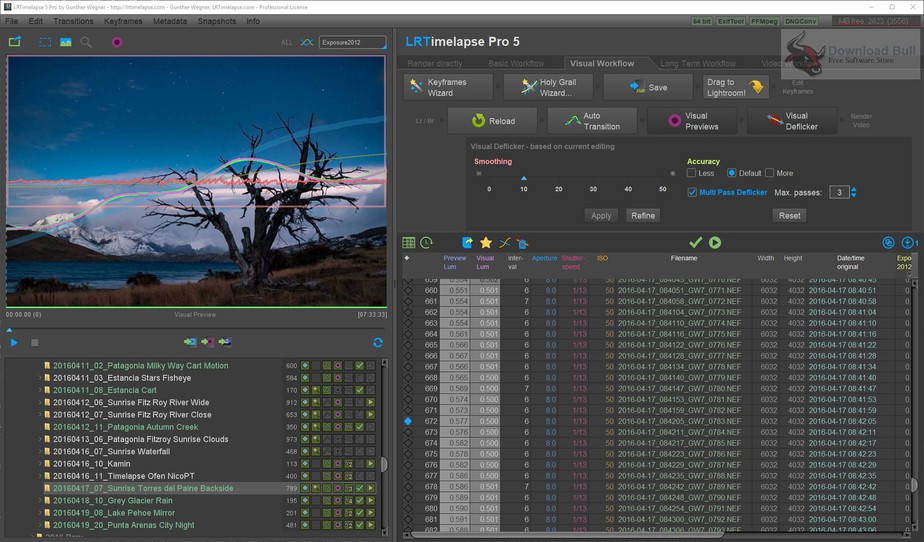


The second tab (below) shows the camera settings – ISO, shutter speed, aperture etc. There’s also an option to change the number of frames that are taken at each interval – useful if you want to make an HDR timelapse film. It’s fairly easy to add tabs (or pages) at the moment the main one (above) shows the timelapse settings – interval, max time/frames, start, stop and preview capture. I based this project on the notebook example that comes with the wxWidgets source code. When a quick trawl for Linux software to create timelapse movies came up with nothing, I decide to use these two libraries to write my own. These tools and libraries allow you to control a wide range of cameras via USB from UNIX-like operating systems. Similarly, I’ve played with libgphoto/gPhoto2 a little using Perl scripts to make timelapse movies (of my dog) using my Canon G7. I already had some experience with wxWidgets, a cross-platform widgets toolkit, from my Hugin/ GSOC endeavours but I wanted to write my own GUI from scratch. Over Christmas I had a bit of spare time on my hands so I decided to get to grips with a few new c++ libraries.


 0 kommentar(er)
0 kommentar(er)
